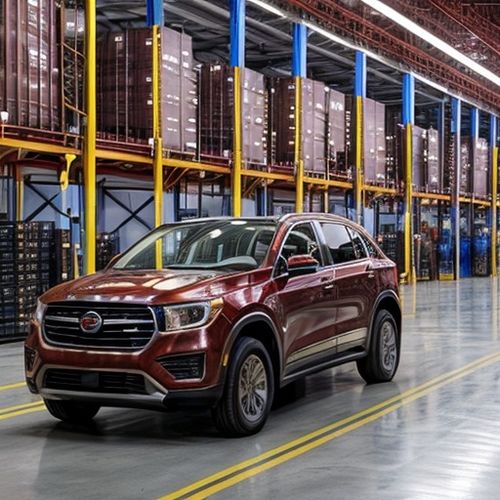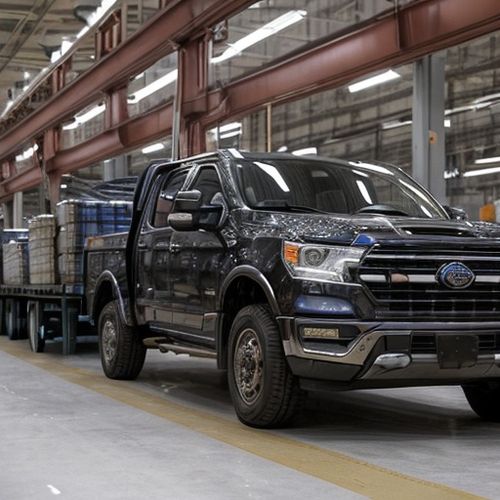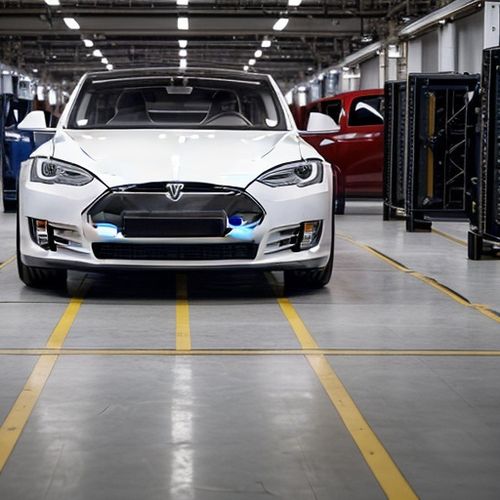President Donald Trump has ignited a new front in the trade wars with his latest move: a 25% tariff on imported cars and parts. Set to take effect on April 3, these tariffs are expected to send shockwaves through the US automotive industry. Trump’s rationale is straightforward: he believes these tariffs will encourage automakers to shift production back to the US, thereby boosting domestic manufacturing and job creation. However, the potential consequences for consumers and the industry are complex and far-reaching.
The Tariff’s Impact on Car Prices
The tariffs are expected to significantly increase the cost of vehicles sold in the US. According to estimates from the Anderson Economic Group, the price of a car assembled in North America could rise between $4,000 and $10,000. For electric vehicles, the increase could be even more pronounced, with prices potentially soaring by at least $12,000. This is due to the fact that even cars assembled in the US rely heavily on imported parts, primarily from Canada and Mexico. The tariffs will apply not only to finished vehicles but also to imported parts used in US factories.
Consumer and Industry Reactions
Consumers are already feeling the pressure. Many are rushing to buy cars before the tariffs take effect, fearing significant price increases. For example, Miguel Colom from Bethlehem, Pennsylvania, plans to purchase a Chevy Equinox EV but feels rushed to make the decision before the tariffs are implemented. Similarly, Robert Wyatt from New Jersey traded in his 9-year-old Mercedes for a new Toyota sooner than planned to avoid future maintenance costs on an older vehicle.
Automakers, on the other hand, are caught in a bind. They face the challenge of balancing production costs with the potential for reduced demand. According to research from Bernstein, Ford Motor and General Motors could see their earnings drop by up to 30%, with the auto sector facing an estimated $110 billion blow. This could lead to job losses and reduced production as companies adjust to the new economic landscape.
The Broader Economic Implications
The tariffs are not just a matter of car prices; they have broader economic implications. Trump’s tariffs are part of a larger strategy to renegotiate trade agreements and protect US industries. However, the move has sparked concerns about a potential trade war. Canadian Prime Minister Mark Carney has warned that Canada will retaliate with its own tariffs if Trump’s levies go forward. This could escalate into a damaging trade conflict, affecting not just the automotive industry but also other sectors reliant on international supply chains.
The Role of Global Supply Chains
The automotive industry is deeply intertwined with global supply chains. For decades, North America has functioned as a single economic unit for car production, with parts and finished vehicles moving freely across borders. Disrupting these supply chains could lead to inefficiencies and higher costs. Automakers are hesitant to shift production to the US due to the significant expense and time required to build new factories and adjust supply chains. Moreover, the uncertainty surrounding Trump’s on-again, off-again approach to tariffs makes long-term planning difficult for CEOs.
Navigating Uncertainty
As the tariffs loom, the US automotive industry faces a period of significant uncertainty. While Trump’s goal is to boost domestic manufacturing, the immediate impact is likely to be higher prices for consumers and potential disruptions in the industry. The coming months will be crucial in determining how automakers and consumers adapt to these new trade policies. The broader economic consequences, including potential retaliatory measures from trading partners, add another layer of complexity to an already challenging situation.

By William Miller/Mar 31, 2025

By Rebecca Stewart/Mar 31, 2025

By Natalie Campbell/Mar 31, 2025

By Olivia Reed/Mar 31, 2025

By Amanda Phillips/Mar 31, 2025

By Michael Brown/Mar 31, 2025

By Lily Simpson/Mar 31, 2025

By Natalie Campbell/Mar 31, 2025

By Christopher Harris/Mar 31, 2025

By Eric Ward/Mar 31, 2025

By Daniel Scott/Mar 30, 2025

By Thomas Roberts/Mar 30, 2025

By Natalie Campbell/Mar 30, 2025

By Rebecca Stewart/Mar 30, 2025

By James Moore/Mar 30, 2025

By Benjamin Evans/Mar 30, 2025

By Michael Brown/Mar 30, 2025

By John Smith/Mar 30, 2025

By John Smith/Mar 30, 2025

By Victoria Gonzalez/Mar 30, 2025